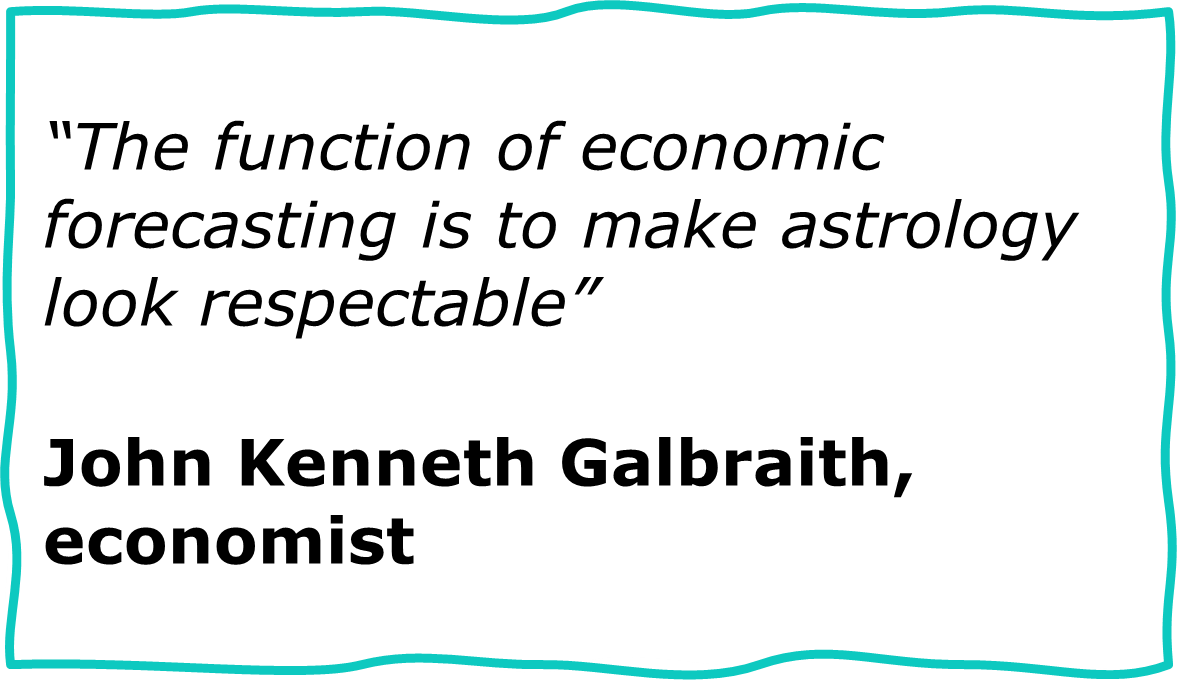 Some economists, analysts and money managers steer well clear of predicting recessions, pivots, inflation, bear markets etc. They just focus on the facts. It isn’t exciting, but it is extremely valuable if you want to understand the context for financial markets right now, particularly the risks.
Some economists, analysts and money managers steer well clear of predicting recessions, pivots, inflation, bear markets etc. They just focus on the facts. It isn’t exciting, but it is extremely valuable if you want to understand the context for financial markets right now, particularly the risks.
These guys are the fact-checkers and the financial history buffs, and typically have at least a couple of decades of experience under their belts. They had an uncomfortable 2023, as set out on page 3 of the latest TopFunds Guide.
Then there are the believers. These guys (they are invariably male) think that details are for wimps, and they just want to pile in – not forgetting that most of them do this with someone else’s money, perhaps your money.
The US financial markets have been driven upwards by “believers”, investors who are seldom distracted by facts or guided by history, and who are flush with certainty on the apparently easy pickings. It has always been thus when inflated financial markets linger around their peaks.
The comfort for such believers is the hooks they seek out to justify their over-enthusiasm. From November the hook was falling inflation which in turn held out the prospect of interest rates heading lower, the fuel for financial markets to head higher, or so the story goes.
As 2024 dawned, the certainty of sharp rate cuts evaporated, and the fact-checkers momentarily took charge of the asylum.
You might think this would dampen the spirits of the believers. Not a bit of it. They were already being baited by another hook – Artificial Intelligence or AI, on which see Friday Note on 1st March. As AI develops it will enable a new layer of efficiency into a wide range of tasks – just as the invention of the wheel meant you didn’t have to carry everything on your back, and you could sell stuff to villages further afield. But these benefits didn’t accrue overnight, and nor will those from AI, and that is a problem for clamouring AI investors.
It is easy to see how the dream might turn to fantasy, triggered by the evaporation of the latest blast of hot air which has pushed the US market higher…
Nvidia is currently the darling of investors seeking super profits from the dream of AI, as they sell the powerful chips which should reveal the potential of AI. The buyers are wealthy governments and companies jostling for advantage, and afraid of missing out (FOMO). They aren’t sure precisely what they might miss – but they just can’t take the risk. Sound a bit flakey?
Think of Nvidia like the guys selling picks and shovels to the gold prospectors in the California Gold Rush of 1849. The pick seller makes a stack of money very quickly as prospectors rush in. Then the gold runs out, or there isn’t any, or not before their patience and food runs out. The pick seller then goes home or goes bust.
How quickly will chip buyers find gold in those hills? Unless the results emerge quite quickly, will they be buying more of the same next year? The vulnerability is obvious.
Nonetheless the main US stock market indices climbed to new highs this week, as the Fed said it still expects three rate cuts this year – before this news, some had doubted their resolve. As set out over recent weeks, the next target for the S&P 500 is 5361, a little over 2% above the level as I write.
The Japanese market has enjoyed a decent rebound this week. Although the Bank Of Japan has now moved away from negative interest rates, the actual change in rates was so insignificant that their bond yields went up slightly, and the yen weakened again. So there is no immediate concern over the large exporters being hit by a stronger yen, nor money being borrowed in yen being quickly repatriated to Japan, dragging down other global financial markets. This issue will undoubtedly raise its head again in 2024.
More parochially, the FTSE 100 and FTSE 250 made renewed steady progress. Inflation was slightly better than expected, and the markets now expect three rate cuts instead of two in 2024. One additional factor has been bubbling-under in the background – the prospect of a Labour Government.
You might have noticed that the shadow Chancellor, Rachel Reeves, has been much more visible in the last week. Behind the scenes, major financial institutions have been banging on the prospective Labour administrations door for some time, and I am told that the waiting list for an audience is about 3 months. (In case you are wondering, there is no queue to have a chat with Conservative ministers.)
Rachel Reeves has revealed her inner-Thatcher, and borrowing for growth is straight out of the Liz Truss play book. Presentation was always the problem for poor Liz, and Rachel Reeves will not make the same mistake. The historical guide that the election of a left-leaning government will hit the stock market, at least initially, might not come to pass. Much more in “Investment opportunities and the UK election cycle”.
Last but not least, gold has had another good week but so have a range of commodities. The diversified JPM Natural Resources fund is always a decent litmus test, and that is up 4% over the week. There are a range of drivers… but for now, just enjoy the ride.